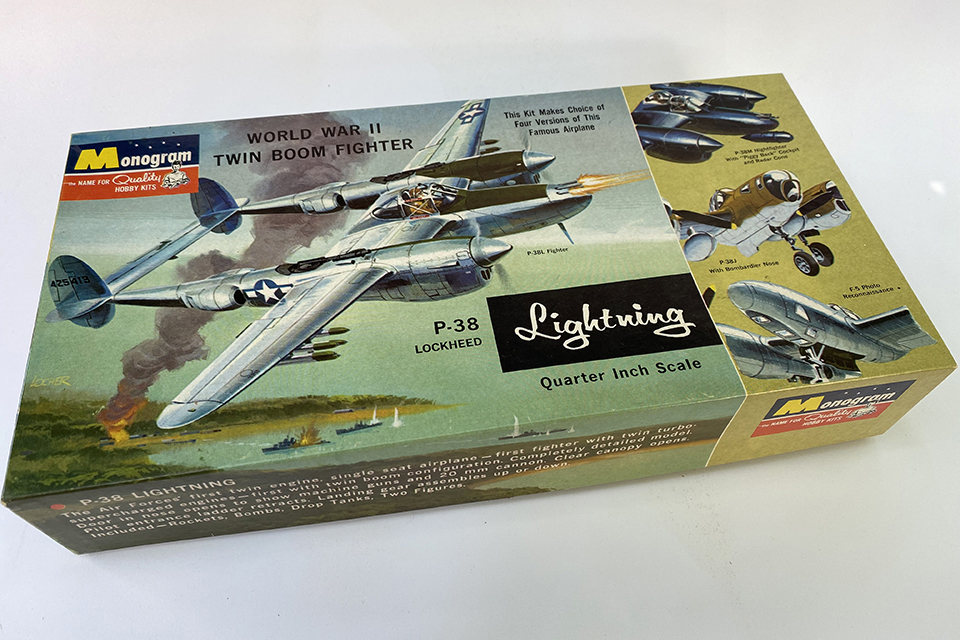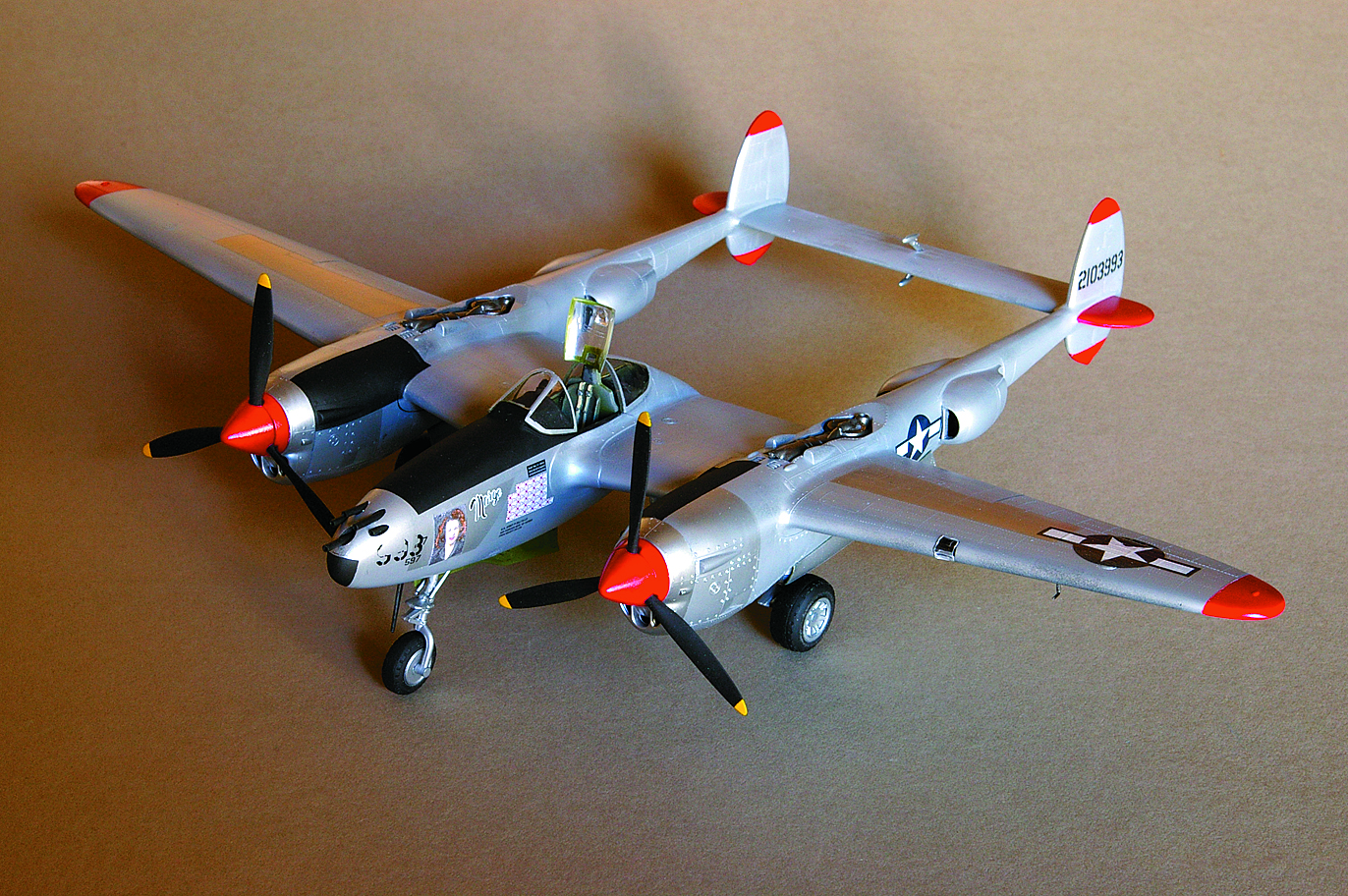Only one Lockheed P-38J model comes with the markings for Major Richard I. Bong’s aircraft, featuring the photograph of his wife Marge on the nose. That kit, in 1/48th scale, was first produced by Monogram Models in 1964 but is now available under the Revell label.
First paint the cockpit “interior green,” FS-34151. The seat should be olive drab, FS-34087, as are several of the boxes on the sidewalls. One nice touch is the “spectacle-shaped” control wheel common to P-38s. Paint the radio set flat black, FS-37031, and glue it to the cockpit’s rear wall armor plating.
Position that assembly in the top portion of the fuselage-wing section. The underside of the cockpit floor is molded in the shape of part of the nose gear wheel well. Another piece of the nose gear well fits into the forward portion of the fuselage, which serves as a platform to secure the weights that will ensure the model sits properly on its tricycle landing gear. Cement the top and bottom sections of the fuselage-wing parts together.

Assembling and gluing the five parts that make up the gun nose requires careful work. Set aside and glue together the port and starboard engine tail booms. Trap the main landing gear legs inside the booms before cementing them together. Glue one of the booms to the fuselage-wing section. Slip the horizontal stabilizer into one of the slots in the tail. Tuck the opposite side of the stabilizer into the other engine boom and glue both into place.
Wet sand with extra fine sandpaper before applying a base coat of light-gray gloss enamel. Mask off the tail and wing trim panels, apply an undercoat of gloss white and then spray with insignia red, FS-31136. When the trim is dry, mask it off and spray on the natural metal finish.
I used Floquil’s “platinum mist,” “old silver” and “bright silver” to duplicate various shades of unpainted aluminum. Note that Bong’s aircraft had flat black anti-glare panels in the front of the cockpit and on the inboard sides of the engine booms.
The nose art was actually a photo of his wife that was glued to the aircraft’s skin. All of the publicity shots with Major Bong standing alongside his aircraft show the portrait in black and white, but actually it was hand-tinted in color. Since black and white film was the standard of the period, the portrait has historically been reproduced in black and white.
To duplicate Marge in color, I copied the portrait on plain paper and then retouched it with Prism Color pencils. Finish your model by painting and attaching the landing gear, canopy and windscreen.





